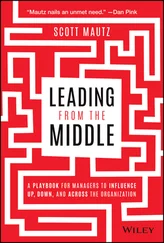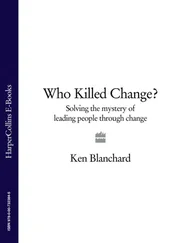Many countries reported an increase in cases of domestic violence during the lockdown. 29 Unemployment, financial insecurity, and stress were significant contributors that led to the increased aggression at home. Several news outlets reported a surge in domestic violence during the COVID-19 pandemic in the United States. 30 With people confined to their homes, there was a potential increase seen in intimate partner violence (IPV). The lockdown measures were intended to protect the public, but they left many IPV victims stuck with abusers unable to connect with services and ask for help safely.
Surveys conducted worldwide have shown a significant increase in domestic violence cases since January 2020. The Guardian reported a surge in domestic violence during the COVID-19 pandemic in the United States. 31 The UK's largest domestic abuse charity, Refuge, reported a 700 percent increase in calls to its hotline in a single day. 32 According to the American Journal of Emergency Medicine 33 and UN women 34 —a United Nations entity dedicated to gender equality and empowerment of women—the cases of domestic abuse increased by 300 percent in Hubei, China; 33 percent in Singapore; 25 percent in Argentina; 30 percent in France; 30 percent in Cyprus; and 50 percent in Brazil.
Religious and devout people visit places of worship to receive hope, peace of mind, strength, and spiritual guidance. Due to the pandemic, churches, temples, mosques, and other places of worship had to close overnight, affecting people of all faiths. There were the cancellations of services, festivals, observances, pilgrimages, and Sunday schools. People felt isolated and alone. Many religious organizations offered worship services through video conferencing and live streaming. However, people have expressed that they do not feel the same spiritual connection and peace as before.
Diwali, the festival of lights in India, is usually celebrated by over 800 million people worldwide. This festival involves the lighting of lamps, exchanging gifts, celebrating with friends and family, and lots of fireworks. COVID-19 restrictions severely limited these activities, with an estimated 60 percent reduction in social interaction. 35 Other religious events have been significantly impacted as well. About 4.55 million tourists visited Israel in 2019, but this was reduced by 81 percent in 2020 36 —a mere 850,000 tourists. Hajj, Islam's most important annual pilgrimage, which usually has more than 2 million people attend every year, was limited to only 1,000 people due to social distancing and crowd control measures implemented by Saudi Arabia. International travelers were barred from the Hajj for the first time in decades. 37
Advocates of many religions appealed to their followers to take safety precautions and embrace their spirituality to deal with challenges related to global crises. Muslim clerics emphasized the government regulations by issuing fatwas 38 and encouraging their communities to practice social distancing and self-isolation. Pope Francis urged Christians to follow the protocols and stay united in difficult times. The unprecedented global crises made millions of Americans embrace worship as an essential part of life. 39 According to a PEW Research Center report, 40 more than half of adults admitted to praying for an end to the virus, with women and the elderly constituting a large portion of the adults.
Many pet owners were shocked to hear news reports that a small number of cats and dogs were infected with the COVID-19 virus, probably by being exposed to someone who was COVID-19 positive. There were also other reports of animals being potential carriers of the virus, and some people were reluctant to keep their pets due to the fear of transmission. The Centers for Disease Control and Prevention (CDC) issued a statement 41 stating that there was no evidence that animals play a significant role in spreading SARS-CoV-2, the virus that causes COVID-19, to people. They also said that based on the limited information available to date, the risk of animals spreading COVID-19 to people is low.
Despite that initial fear, the number of people adopting more pets during the lockdown also increased. People stuck at home are using pets to endure the challenging time and comfort them. People dealing with mental health problems self-reported that their pets helped improve their mental well-being, and they experienced stronger bonds with them. Also, pet owners reported feeling less lonely than those who didn't own pets. Pets constituted an important source of emotional support and helped people filling the gap created by the lockdown. 42
With everyone locked in together for long periods and with high levels of stress and anxiety, relationships have been strained and stretched to their limit in many cases. During the COVID-19 pandemic, divorce rates skyrocketed, and lockdown created a make-or-break environment with people having relationship realizations. In the United States alone, the divorce rate increased by 34 percent. 43 Relationship counselors rank financial problems, boredom, mental health issues, disagreements about parenting, and division of labor in the house as the most common sources behind relationship trouble. The most affected couples had bumpy relationships long before the pandemic, and being couped up with the stressors further amplified during the lockdown, leading toward separation.
Humanity Needs Empathy Now More Than Ever
The ongoing coronavirus pandemic, political turmoil, and revelations about systemic racism and sexism have been heart-wrenching for people and their families all over the world. Millions of people have reported that they struggle to put enough food on the table. Just in the United States, over 26 million adults said they could not feed their families properly in 2020 due to hardship 44 and an additional 24 millions adults are undergoing some form of food insecurity. 45 Families suffering from unemployment also have had to grapple with an inability to pay rent or mortgage. Studies have shown that renters of color face food and housing hardships, in addition to difficulty covering expenses such as utilities, car payments, or medical expenses. 46
Over 1.6 billion workers were impacted or unemployed due to the pandemic out of a global workforce of 3.3 billion! 47 That is nearly half of the global workforce affected or at risk of losing their livelihood. Unemployment rates have jumped since April 2020 to levels not seen since the Great Depression of 1929, and it is depressing to realize that these rates will continue to grow until conditions improve globally. 48 Job losses have predominantly centered in low-paid industries, part-time jobs, and the gig economy. A recent US Congressional Research Service report stated that part-time workers experienced an unemployment rate almost double that of full-time workers in April 2020 49 and, as expected, racial and ethnic minorities had high rates of unemployment through all of 2020.
The last two years have been ones of losses, not just in lives but also in jobs, security, safety, belonging, familiarity, love, emotional health, and well-being. People have been afraid to venture outside their homes, and many have become depressed or have severe anxiety bouts. In senior living and care communities, people have been suffering from an atmosphere of fear, from contracting the virus and from the isolation and new realities the pandemic has triggered. Most of us want to step up and contribute to solutions but are hard-pressed to know what we can do as individuals and as long-term care teams.
Finding the Silver Lining in These Dark Clouds
Читать дальше












